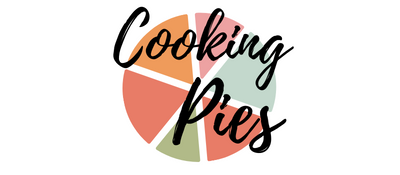Why Bread Can Be Worse Than Sugar

Bread is eaten by billions of people around the world, but did you know that it can be worse than sugar for your health? In this article, we’ll explore why bread can be harmful to your body and why you might want to choose low-GI alternatives.
Table of Contents
High Glycemic Index (GI)
The glycemic index (GI) is a measure of how quickly a food raises blood sugar levels. Foods with a high GI score (70 or higher) can cause a rapid increase in blood sugar, leading to insulin resistance and eventually diabetes. Bread, especially fluffy white bread, has a high GI score of 70 to 100, making it one of the worst offenders when it comes to blood sugar spikes. According to Harvard Health, high GI foods can also increase the risk of heart disease and obesity.
Why does bread have a high GI? It’s because it’s made with refined flour, which is stripped of its fiber and nutrients during processing. This means that the carbohydrates in bread are rapidly converted to glucose and absorbed into the bloodstream, leading to a blood sugar spike. This is very bad if you have a condition such as diabetes, where you need to keep your blood sugar levels under control.
So, what can we do to avoid the negative health effects of high GI bread? It’s important to choose bread with a low GI score, which means it has a slower and more gradual effect on blood sugar levels. Examples of low GI bread include whole grain bread, sourdough bread, and rye bread. These types of bread contain more fiber and nutrients than white bread, which helps to slow down the absorption of carbohydrates and prevent blood sugar spikes.
In addition to choosing low-GI bread, it’s also important to pay attention to portion sizes. Eating too much bread, even if it’s low GI, can still lead to blood sugar spikes.
The GI value of bread varies depending on the processes and ingredients used to bake it. For reference, below is a table of different types of bread along with their Glycemic Index (GI) values.
| Type of Bread | GI Value | GL Value |
|---|---|---|
| White flour bread | 90 | 43.9 |
| Gluten free white bread | 90 | 14 |
| Baguette (whole grain) | 73 | 28 |
| Wholemeal bread | 65 | 31.2 |
| Rye bread | 65 | 31.2 |
| Pumpernickel bread | 45 | 21.6 |
| Pumpkin bread | 40 | 17 |
Refined Flour
Most bread is made with refined flour, which is stripped of its nutrients during processing. Refined flour can lead to weight gain, inflammation, and digestive issues. In contrast, whole-grain bread contains both bran and germ, which are rich in fiber and nutrients. Choosing whole grain bread over refined white bread is a healthier option for your body.
It’s a topic of scientific debate as to whether bread made from flour stripped of nutrients does impact a person’s gut microbiome. Some studies have found that the type of bread consumed can have a significant impact on the diversity and composition of gut bacteria. While others found no evidence of bread impacting gut microbiota. While the scientists settle this debate, I’ll personally be sticking to whole grain and sourdough bread.
Additives
Many commercial bread products contain additives such as preservatives, artificial flavors, and colors. These additives can be harmful to your health and may cause allergies or digestive problems. It’s best to choose bread that is free from additives and made with natural ingredients.
As a recent Healthline article put it, “the best way to ensure that you’re choosing a healthy bread is to make it yourself”. We agree with this sentiment, and there are many articles online that require only a few simple ingredients, such as flour, water, yeast, and salt.
Gluten
For those with celiac disease or gluten sensitivity, bread can be particularly harmful. Gluten is a protein found in wheat, barley, and rye, and can cause inflammation and damage to the small intestine in those who are sensitive to it. Choosing gluten-free bread alternatives can be a better option for those with gluten intolerance. However, it’s important to note that gluten-free bread may not always be a healthier option as it can still contain refined flour and additives.
Can I Still Eat Bread?
When it comes to choosing bread for optimal health, not all loaves are created equal. For most people, the best options are those that are 100% whole grain, meaning they contain the entire grain kernel, including the bran and germ. Look for bread made from grains like whole wheat, rye, or spelt, which provide more nutrients and fiber than refined white bread.
Sourdough bread is another good choice, as the fermentation process can increase nutrient availability and improve digestion. Sprouted grain bread is also gaining popularity, as sprouting can boost nutrient levels and decrease anti-nutrients. By choosing these specific types of whole grain bread, you can maximize the health benefits and minimize the negative impact on your body.
Final Thoughts
Bread can be worse than sugar for your health due to its high glycemic index, refined flour, additives, and gluten content. To minimize the negative impact on your health, choose low GI bread made with whole grains and natural ingredients. Your body will thank you!




Leave a Reply